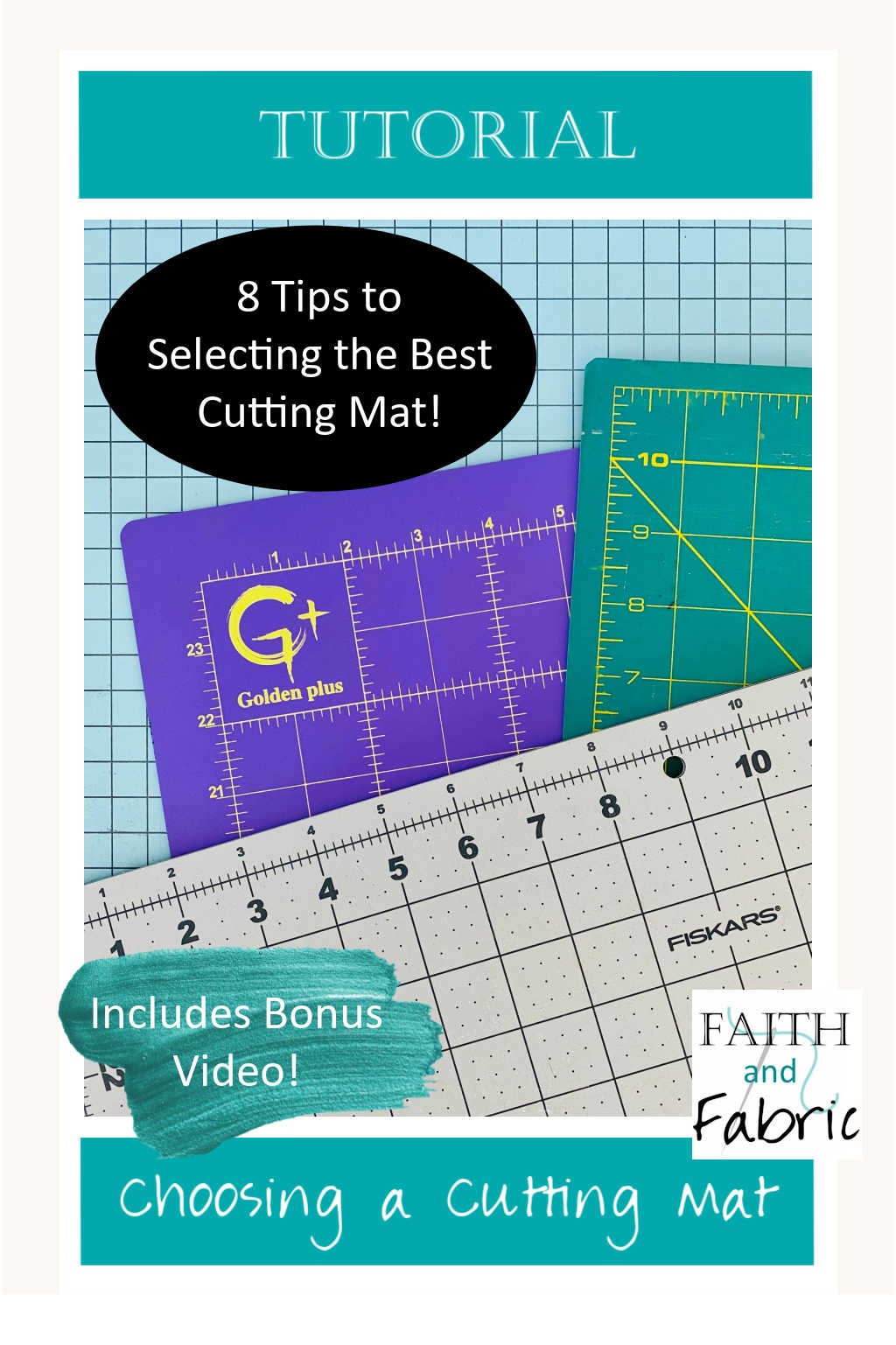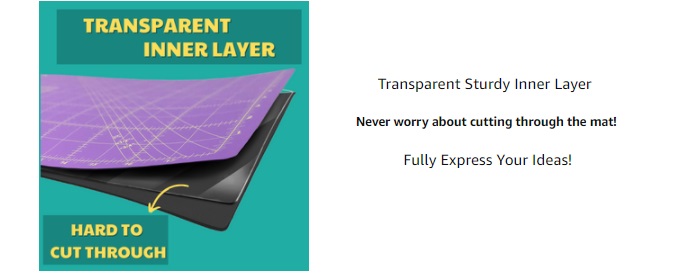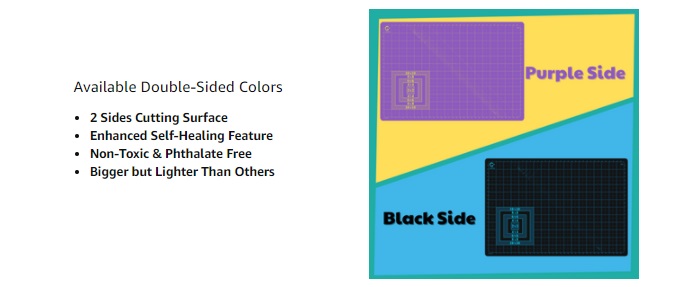
Whether you’re an experienced quilter or just getting started, one tool you’ll need is a cutting mat. Today, we’re going to take an in depth look at how to choose the best cutting mat for quilting. There are so many on the market, that selecting the best cutting mat comes down to a few key factors as well as personal choice. Let’s get started. I’ve prepared a detailed video taking you through each of the points below:
- DETERMINE THE SIZE OF YOUR AVAILABLE SPACE: First, you want to think of the size of your cutting mat. Cutting mats come in all different shapes, from a small 9”x12” all the way up to a 24”x36” – and even beyond. You’ll want to take inventory of your space; for me, I have a large permanent cutting table, so I’ve chosen to go with a large 24”x36” cutting mat to really maximize my space. I also keep an older, small version in my travel bag for when I’m heading to quilt guild meetings.One thing I would recommend AGAINST is putting two smaller cutting mats together to form a larger mat. The problem you create here is the ridge where the two mats come together. You’re going to not only go through your rotary cutter blades faster, as the blades will often nick on the seam, but you’re more likely to make mistakes in cutting – or even cut yourself – if your blade gets caught in the seam.
- CHOOSE SELF-HEALING: You’ll want to find a cutting mat that lists itself as self healing. Now, most mats today DO have this designation, but that doesn’t make it any less important to first verify. Self Healing mats are manufactured from separate tiny pieces of material which are pressed together creating a solid surface to cut on. When you roll your rotary cutter blade, the blade itself goes between these tiny pieces. This separates the pieces rather than cutting into the mat’s surface, and can help to extend the life of your cutting mat.
- CHECK THE THICKNESS: one thing you don’t want is a thin mat. Good cutting mats should be at least 3-ply in thickness, and have a solid core that prevents your cutting tools from going through. Here’s an image from one of the mats I use (the G+ 24″x36″); you’ll see the solid core between the top and bottom cutting layers.
- GO FOR DOUBLE SIDED: over time, your mat will need to be cleaned. Here’s a link to a video tutorial on how to keep your mat in top condition! That said, you will find that – over time – your mat will begin to get ridges in it from repetitive cutting . This is where having a double-sided cutting mat comes into play. By purchasing a cutting mat that is double sided, you’re really getting two mats in one – when one side shows wear, you can flip it over and have a brand new mat to work with.
- CHECK FOR NON-SLIP: Nobody wants to have their mat slip sliding away, so be sure to check that your mat calls out that it is non-slip. If you find you’re still having trouble with your mat slipping, it might be due to the surface you have your mat on, in which case a bit of non-slip padding will solve the problem.
- MARKINGS AND MEASUREMENTS: Now I live in the US, which means inches are all the rage. My cutting mat has designations in inches, which makes sense…but wouldn’t make sense if I lived in a different country that used the metric system. You’ll also want to look for “bonus” markings on your mat; for example, my cutting mat has – in addition to the horizontal markings – diagonal markings which come in great when trimming triangular shapes. I also love how this mat has common block measurements already printed on the mat; it makes trimming my blocks so easy.
- BE ECO-FRIENDLY: It’s important to be environmentally conscious whenever you can. When you choose your mat, look for one that talks about its manufacturing process. You’ll see that companies will list that their mat is “Phthalate Free” or “CA65 compliant”. When you search for cutting mats, you’ll often see a designation of “odorless” – trust me, this is important! I’ve been the purchaser of stinky cutting mats that leave my room smelling chemically for a few weeks, and nobody wants that.
- PICK YOUR COLOR: Lastly, if you’re like me, color is everything! You’ll want to find a cutting mat that matches your décor. Luckily, mats come in all different colors meaning you can often find the size and quality you’re interested in in tones that match your studio. My G+ mat is purple, which fits so well in my gray studio! Plus, it’s liturgically correct for Advent and Lent, too.
(Visited 16 times, 16 visits today)


Leave a Reply